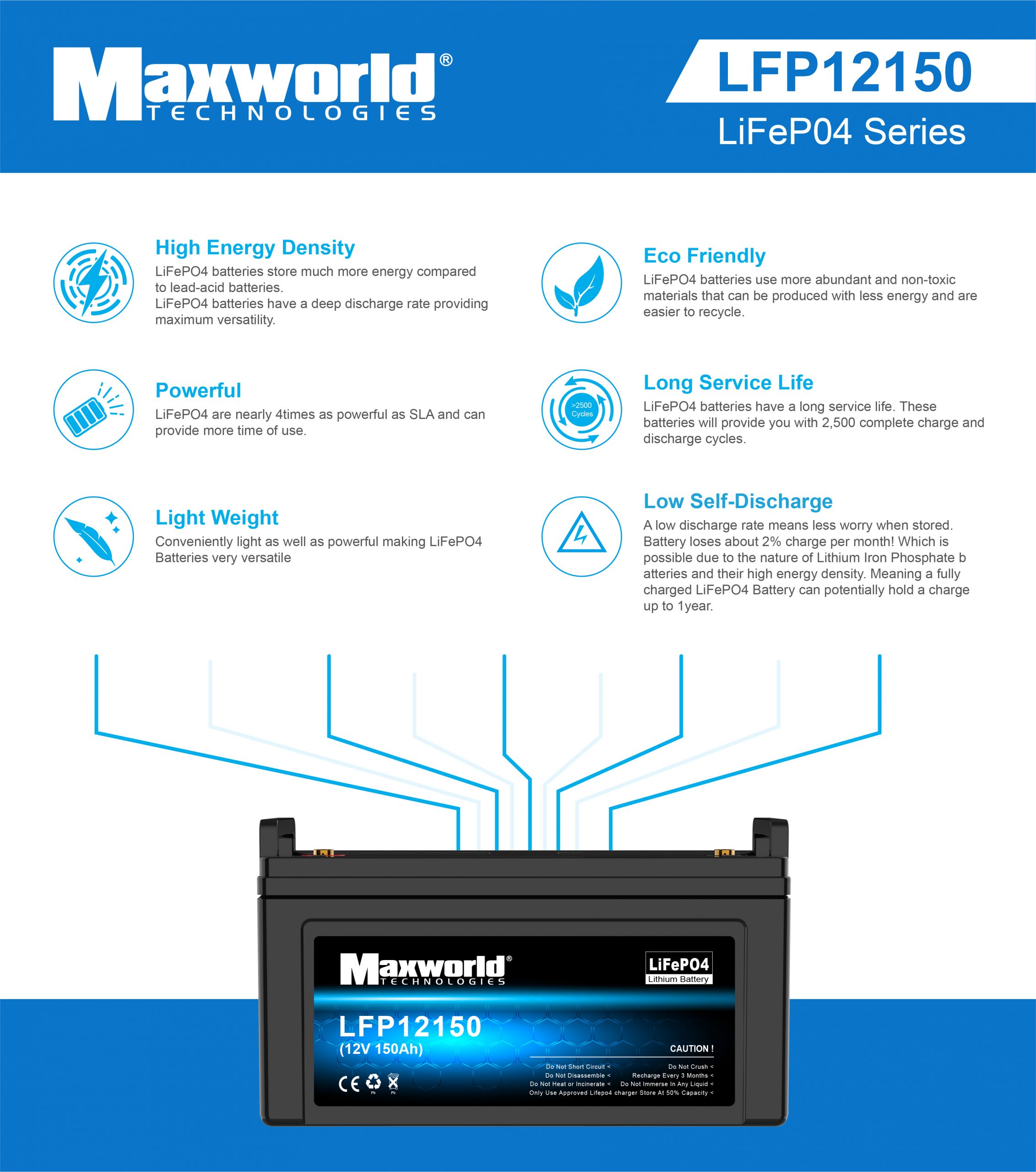How to Charge Your (LIFEPO4) BATTERIES
Ire there any better way to charge LiFePo4 Battery? Our customers frequently inquire about this topic. Using a LiFePO4 battery charger is the only solution. Before you begin, check to be sure you are not charging LiFePO4 batteries with an incorrect type of lithium-ion charger. LiFePO4 chargers often have lower voltages. Lead-acid battery chargers are routinely used to charge lithium iron phosphate batteries, which we get questioned about quite a bit. There is a simple yes or no response to this question.
CHARGER INSPECTIONS (to be performed)
Before utilizing your LiFePo4 Batteries charger, check to see that all of its cables are properly insulated and free of any damage or wear. The connections between the charger and battery terminals must be clean and oriented correctly to produce a good relationship and high conductivity.
Instructions on how to charge your device LiFePO4 batteries do not need to be recharged after each usage if they have not been depleted to their lowest capacity.
It is safe to leave LiFePo4 Batteries partially charged for extended periods (PSOC). Should recharge liFePO4 batteries after each usage or when they have been drained to at least 80% of their rated DOD capacity (20 percent SOC). Remove the load and charge the battery as rapidly as possible with a LiFePO4 battery charger if the Battery Management System (BMS) disconnects the battery due to low voltage (voltage will be 10V).
0 to 45 degrees Celsius is the safest temperature range for charging LiFePO4 batteries (32 degrees Fahrenheit to 113 degrees Fahrenheit). LiFePo4 Batteries do not require temperature compensation for voltage during charging, regardless of the temperature. Integrated BMS protects LiFePO4 batteries from extreme low and high temperatures. The battery must warm up before the battery management system (BMS) can reconnect and receive the charging current. A malfunctioning BMS can’t start charging a battery if it’s too hot. Therefore it needs to cool down before the BMS tries again. Your specific battery’s datasheet contains the BMS low-temperature and high-temperature cut-off settings and reconnects values.
We can charge and discharge our lithium LT batteries in the -20 to 60 degree Celsius temperature range.
LiFePo4 Batteries are readily available. Chilly climate was taken into consideration when developing these batteries. Charging these batteries by drawing electricity from the charger using a unique heating mechanism is possible. There are no other components required. At every stage, the heating and charging procedures run smoothly. The heating system is activated whenever charging is below 0 degrees Celsius and remains on until no longer required. The charger, not the battery, powers the heating system. This prevents the lithium battery from depleting and ensures that you will always have power. The built-in heating and monitoring systems will take care of the rest once you’ve connected the LT lithium battery to the LiFePO4 charger.
Conclusion
Using a LiFePO4 battery charger is the only solution to charging lithium iron phosphate batteries. It is safe to leave LiFePo4 Batteries partially charged for extended periods (PSOC). Charging cables must be properly insulated and free of any damage or wear. 0 to 45 degrees Celsius is the safest temperature range for charging LiFePo4 Batteries (32 degrees Fahrenheit to 113 degrees Fahrenheit). A malfunctioning BMS can’t start charging a battery if it’s too hot. Charging these batteries by drawing electricity from the charger using a unique heating mechanism is possible.





